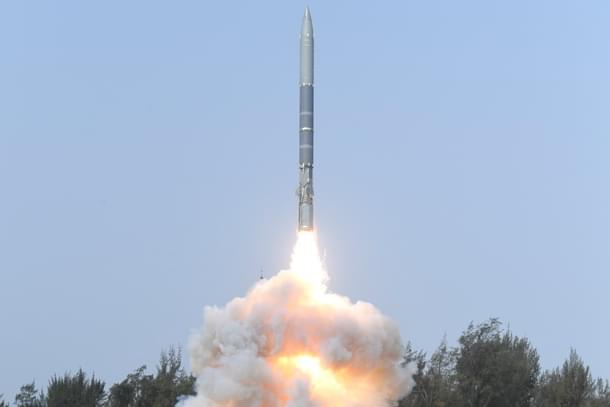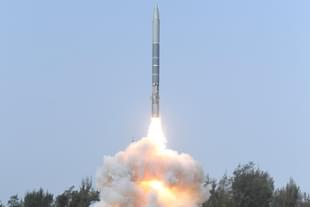Defence
Indian Navy Now Has A 'SMART' Weapon To Destroy Chinese Submarines In Indian Ocean
Ujjwal Shrotryia
May 02, 2024, 02:00 PM | Updated 02:05 PM IST
Save & read from anywhere!
Bookmark stories for easy access on any device or the Swarajya app.


Defence Research and Development Organisation (DRDO) successfully tested the Supersonic Missile Assisted Release of Torpedo (SMART) system yesterday (1 May).
This is the third successful test of the system conducted from the Integrated Test Range (ITR) Balasore in Odisha, with the first and second tests conducted in 2020 and 2021 respectively.
The SMART weapon system will give a boost to Indian Navy’s anti-submarine warfare capabilities, making it easier for the navy to target Chinese submarines lurking in the depths of the Indian Ocean from stand-off ranges.
With a range of close to 650 kilometres, the weapon system will be able to drop a lightweight torpedo on the surface of the water just over the submarine, giving it very little time to evade.
The SMART itself is a missile that has a two-stage solid-propellant rocket motor, which uses periodic updates from the inertial navigation system/global positioning system (INS/GPS) to reach close to its target, adjusting its location using a two-way datalink in real-time.
It carries an advanced lightweight torpedo with a warhead of 50 kilograms. This torpedo has a range of a further 20 kilometres.
As soon as a Chinese submarine in the Indian Ocean is detected, the SMART missile is launched.
The missile can be launched from both ground-based 8x8 transporter erector launchers (TEL) and from vertical launch systems (VLS) of Indian Navy ships.
The missile changes its course using real-time inputs from either MH-60R Romeo helicopters, Boeing P-8I Poseidon long-range maritime patrol aircraft, or sonars from Coast Guard and Indian Navy ships, and reaches as close to the target at supersonic speed.
This is where the missile slows down, releases the torpedo over the surface of the water, after which the torpedo homes on the submarines using its own power and guided by its own active sonar.
What makes the system unique is its long range of close to 650 kilometres.
No contemporary system — whether US’s RUM-139 ASROC, Russia’s RPK-6, or Japan’s Type 07 system — has such a long range.
It makes the system very lethal against submarines, especially against Chinese submarines that venture out into the Indian Ocean hiding in spots identified by Chinese spy vessels mapping the ocean floor under the garb of hydrographic research.
Since India’s military bases at the Andaman and Nicobar Islands are very close to the chokepoints of the Malacca, Sunda, and Lombok straits, these SMART missiles deployed on these islands can become a real headache for Chinese planners.
Given that time is critical in striking a submarine after detection, the supersonic speed of the system makes it an optimum weapon where no long-range anti-submarine warfare (ASW) aircraft (P-8I) or helicopter (MH-60R and Dhruv Mk-3) can reach at the right time.
China just yesterday (1 May) commenced the sea trials of its aircraft carrier Fujian.
It is expected that the Chinese People's Liberation Army Navy will start sending its carrier battle group (CBG) into the Indian Ocean.
These SMART missiles can take out submarines of the CBG, making it vulnerable to strikes by Indian submarines. This also nullifies the advantage of the CBG to effectively project power in the Indian Ocean Region.
Staff Writer at Swarajya. Writes on Indian Military and Defence.




